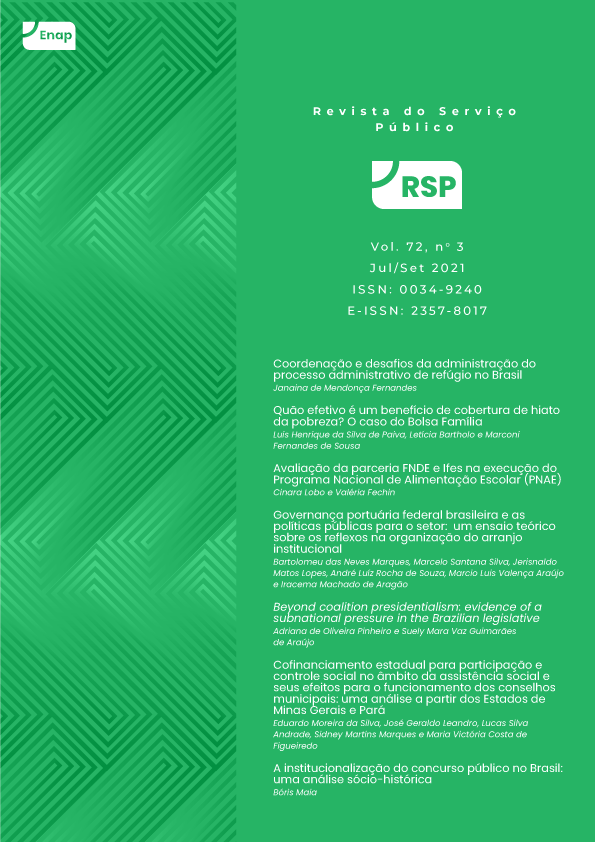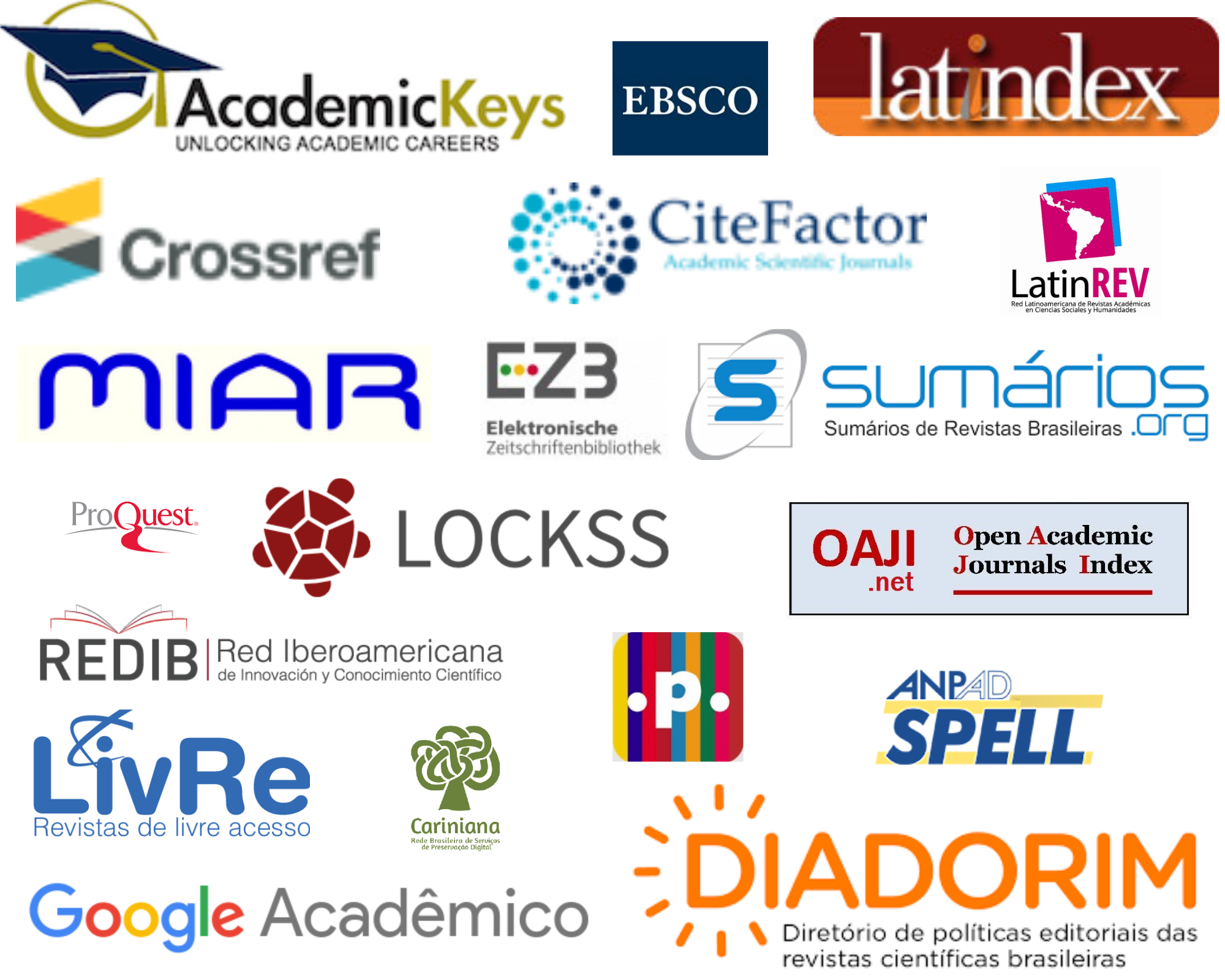How effective is a top-up social benefit? The case of Brazil’s Bolsa Família
Keywords:
Bolsa Família, extreme poverty, benefit design, top-up benefitAbstract
Top-up benefits complement the beneficiary’s income up to a certain level. They have been used in several countries. The objective of this paper is to analyze how effective a top-up social benefit is in a context of high labor informality and income volatility. Based on data from the Brazilian National Household Sample Survey (Pnad Contínua/IBGE 2019), we compare the current benefit model for the Bolsa Família program (whose main strategy for fighting extreme poverty consists of a top-up benefit) with its perfect version and with a hypothetical flat-rate benefit model, paid to all extremely poor people and poor children covered by the program. The total budget is the same. Our results suggest that the top-up benefit seems to perform marginally better than the flat-rate benefit, but the difference is not statistically significant. The extreme poverty rate observed in 2019 (measured by the program’s lower eligibility threshold of BRL 89 per capita per month) was of 4.1%, whereas it would have been 4.3% if the program had a flat-rate benefit. This advantage was also observed in other poverty measures, again with non-significant results.
Downloads
References
AMADO, P. O desenho dos programas de transferência condicionada de renda do Brasil e México: uma análise dos critérios de elegibilidade. 2018. Dissertação (Mestrado em Ciências – Integração da América Latina). Universidade de São Paulo, São Paulo, 2018.
ARZA, C.; CHAHBENDERIAN, F. Programas de transferencias monetarias a las familias: las experiencias de Argentina, Bolivia, Brasil y Chile. Documentos de Trabajo CIEPP, Buenos Aires, n. 90. Centro Interdisciplinario para el Estudo de Politicas Publicas, 2014.
BANERJEE, A. et al. Debunking the stereotype of the lazy welfare recipient. CID Working Paper Series, Cambridge, No. 2015.308. Harvard University, 2015.
BASTAGLI, F. et al. Cash transfers: what does the evidence say? A rigorous review of programme impact and of the role of design and implementation features. Londres: Overseas Development Institute, 2016.
BRASIL. Medida Provisória n° 570, de 14 de maio de 2012. Diário Oficial da União: seção 1, Brasília, DF, ano 149, n° 93, p. 2-3, 15 de maio. 2012a.
BRASIL. Medida Provisória n° 590, de 29 de novembro de 2021. Diário Oficial da União: seção 1, Brasília, DF, ano 149, n° 231, p. 1, 30 de novembro. 2012b.
BRASIL. Lei nº 12.817, de 5 de junho de 2013. Diário Oficial da União: seção 1, Brasília, DF, ano 150, n° 107, p. 1-3, 6 de junho. 2013.
COSTA, P.V.; FALCÃO, T. O eixo de garantia de renda do Plano Brasil sem Miséria. In: CAMPELLO, T.; FALCÃO, T.; COSTA, P. V (org). O Brasil sem Miséria. Brasília: MDS, 2014.
FOSTER, J.; GREER, J.; THORBECKE, E. A class of decomposable poverty measures. Econometrica: journal of the econometric society, v. 52, n° 3, 1984.
HICK, R.; LANAU, A. Tax credits and in-work poverty in the UK: an analysis of income packages and anti-poverty performance. Social Policy and Society, v. 18, n. 2, 2019.
HOYNES, H. The earned Income Tax Credit. Annals AAPSS, n. 686, 2019.
KABEER, N.;WADDINGTON, H. Economic impacts of conditional cash transfer programmes: a systematic review and meta-analysis. Journal of Development Effectiveness, v. 7, n. 3, 2015.
MOSTAFA, J.;SANTOS, T. Limitações de um teste de meios via predição de renda: evidências de uma aplicação no Programa Bolsa Família. Texto para Discussão, n° 2.238. Rio de Janeiro: IPEA, 2016.
OLIVEIRA, L.F.B; S.S.D. SOARES. O que se sabe sobre os efeitos das transferências de renda sobre a oferta de trabalho, Texto para Discussão, nº 1.738. Brasília: IPEA, 2012.
OSÓRIO, R. G., SOARES, S.; SOUZA, P. F. Erradicar a pobreza extrema: um objetivo ao alcance do Brasil. Texto para Discussão, n° 1619. Rio de Janeiro: IPEA, 2011.
OSORIO, Rafael Guerreiro; SOUZA, Pedro H. G. F. O Bolsa Família depois do Brasil Carinhoso: uma análise do potencial de redução da pobreza extrema. Nota Técnica nº 14. Brasília: IPEA, 2012.
SOARES, S. Volatilidade de renda e a cobertura do Programa Bolsa Família. Texto para Discussão, n° 1459. Rio de Janeiro: IPEA, 2009.
SOARES, S.;LEICHSENRING, A. R. Precariedad laboral, volatilidad de ingresos y cobertura del Programa Bolsa Familia. Iniciativa América Latina e Caribe sem Fome – Organização das Nações Unidas para a Agricultura e a Fome. Working paper, n° 12, 2010.
SSA-ISSA (Social Security Administration-International Social Security Association). Social Security Programs Throughout the World: Europe, 2018. Washington: Social Security Administration, 2018.
SSA-ISSA (Social Security Administration-International Social Security Association). Social security programs throughout the world: the Americas, 2019. Washington: Social Security Administration, 2019.
SOUZA, P. F., VAZ, F.; PAIVA, L. H. Efeitos redistributivos da reforma da previdência. Texto para Discussão, n° 2424. Rio de Janeiro: IPEA, 2018.
VARGAS, L. H.; CUEVA, P.; MEDELLÍN, N. ¿Cómo funciona Ingreso Ético Familiar? Mejores prácticas en la implementación de Programas de Transferencias Monetarias Condicionadas en América Latina y el Caribe. Nota Técnica, n° IDB-TN-1163. Banco Interamericano de Desenvolvimento, 2017.
WHITEFORD, P.; WHITEHOUSE, E. Pension challenges and pension reforms in OECD countries. Oxford Review of Economic Policy, v. 22, n. 1, 2006.
Downloads
Published
How to Cite
Issue
Section
License
Copyright (c) 2021 Revista do Serviço Público

This work is licensed under a Creative Commons Attribution-NonCommercial-ShareAlike 4.0 International License.
- A RSP adota a licença Creative Commons (CC) do tipo Atribuição – Uso Não-Comercial (BY-NC).
- A licença permite que outros remixem, adaptem e criem obra licenciada, sendo proibido o uso com fins comerciais.
- As novas obras devem fazer referência ao autor nos créditos e não podem ser usadas com fins comerciais, porém não precisam ser licenciadas sob os mesmos termos dessa licença.
- Ao publicar o artigo na RSP, o autor cede e transfere para a ENAP os direitos autorais patrimoniais referentes ao artigo.
- O artigo publicado na RSP não poderá ser divulgado em outro meio sem a devida referência à publicação de origem.
- O autor que tiver o artigo publicado na RSP deverá assinar o Termo de Concessão de Direitos Autorais (em momento oportuno a editoria da Revista entrará em contato com o autor para assinatura do Termo).



